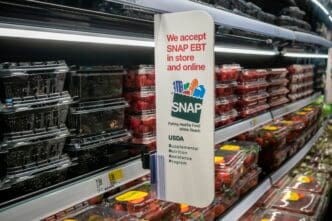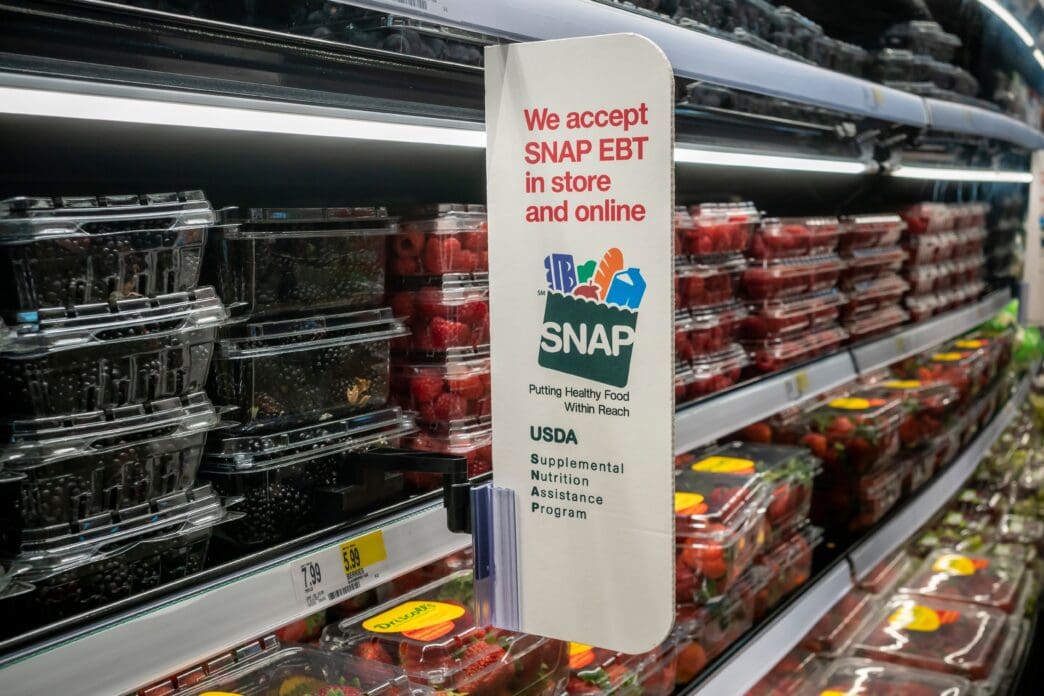Executive Summary
- The Trump administration’s USDA announced it will not use its $6 billion contingency fund to cover Supplemental Nutrition Assistance Program (SNAP) benefits for November, affecting approximately 42 million Americans.
- The USDA claims contingency funds are not legally available for regular benefits due to the shutdown, a position challenged by Democratic lawmakers and advocates who argue the administration is legally required to use these reserves.
- This decision intensifies pressure on Congress to resolve the ongoing federal government shutdown and highlights the administration’s legal interpretations for maintaining critical social programs.
The Story So Far
- The potential loss of Supplemental Nutrition Assistance Program (SNAP) benefits for 42 million Americans in November is a direct result of the ongoing federal government shutdown, which began on October 1, and the Trump administration’s Department of Agriculture (USDA) refusing to utilize a $6 billion contingency fund. While the USDA cites legal restrictions, claiming appropriations “no longer exist,” Democratic lawmakers and advocates contend the agency is legally obligated to use these funds, which Congress intended for such emergencies, highlighting a broader political standoff over federal spending.
Why This Matters
- The Trump administration’s refusal to utilize a contingency fund for November’s Supplemental Nutrition Assistance Program (SNAP) benefits directly threatens the food security of approximately 42 million Americans, significantly escalating the urgency for Congress to resolve the ongoing federal government shutdown. This decision also ignites a contentious debate regarding the administration’s legal interpretation of its funding obligations for critical social safety net programs during a lapse in appropriations.
Who Thinks What?
- The Trump administration’s Department of Agriculture (USDA) stated that its $6 billion contingency fund cannot legally be used for regular SNAP benefits because the appropriation for those benefits “no longer exists” due to the government shutdown, and states will not be reimbursed for using their own funds.
- Democratic lawmakers and SNAP advocates contend that the USDA is legally required to use the contingency fund to provide November SNAP benefits, arguing that President Trump’s administration’s claim of inability is “unequivocally false” and that other funding avenues should be explored.
The Trump administration’s Department of Agriculture (USDA) has announced it will not utilize its $6 billion contingency fund to cover Supplemental Nutrition Assistance Program (SNAP) benefits for November. This decision means approximately 42 million Americans relying on food stamps will not receive critical food assistance next month, escalating pressure on Congress to resolve the ongoing federal government shutdown that began on October 1.
USDA’s Rationale
The agency stated in an internal memo, obtained by CNN, that contingency funds are not legally available for regular benefits because the appropriation for regular benefits “no longer exists” due to the shutdown. This position also indicates that states using their own funds for benefits will not be reimbursed, according to the memo, which was first reported by Axios.
Congressional Impasse
The standoff in Congress, which began October 1, has led to the federal government shutdown. Democrats are reportedly insisting on an extension of enhanced Affordable Care Act subsidies for any short-term spending bill, while Republican lawmakers and officials have blamed Democrats for the impasse.
Agriculture Secretary Brooke Rollins previously warned reporters last week that food stamps would run dry by month’s end. The agency had earlier advised states to hold off on next month’s payments due to insufficient funds if the federal funding lapse continued.
Differing Interpretations and Advocacy
Democratic lawmakers and SNAP advocates contend that the USDA is legally required, or at least obligated, to use the contingency fund, which is estimated to require about $8 billion for November benefits. They are urging the agency to explore other funding avenues, similar to how the administration has supported other priorities.
Sharon Parrott, president of the left-leaning Center on Budget and Policy Priorities, criticized the administration’s stance. She asserted that President Trump’s administration is “unequivocally false” in its claim of inability to deliver November SNAP benefits, arguing that the administration is “legally required” to use the contingency reserves provided by Congress for such situations.
Precedent and Other Programs
The USDA’s own shutdown contingency plan, which has since been taken offline, previously noted “Congressional intent is evident that SNAP’s operations should continue.” It referenced the contingency plan’s ability to fund participant benefits if a lapse occurs mid-fiscal year.
SNAP, a key pillar of the nation’s safety net, provides an average monthly benefit of $188 per person to approximately one in eight Americans. This is not the first instance of food stamp benefits being at risk during a shutdown, as a similar situation arose during the record-long impasse that began in December 2018, though a workaround was ultimately identified.
Earlier this month, the Trump administration shifted $300 million in tariff revenue to keep the WIC program, which provides food aid to nearly 7 million pregnant women, new mothers, and young children, operating through October.
Outlook
The USDA’s decision intensifies the debate over the administration’s legal options for maintaining critical social programs during a government shutdown. With millions of Americans facing the potential loss of food assistance, the impasse places renewed urgency on lawmakers to reach a federal spending agreement.








